




Window sills are often overlooked when it comes to cleaning, but they can accumulate dust, dirt, and grime just like any other surface in your home. Properly cleaning your window sills not only improves the overall appearance of your windows, but it also helps to maintain their functionality and prolong their lifespan. In this ultimate guide, we will explore some easy and effective methods to clean window sills so that you can achieve a sparkling clean finish with minimal effort.
One of the first steps in cleaning window sills is to remove any loose dirt or debris. You can do this by using a soft brush or a vacuum cleaner with a brush attachment. Gently brush or vacuum away any dust, dirt, or cobwebs that may have accumulated on the surface and in the corners of your window sills.
Next, it’s time to tackle any stubborn stains or grime that may be present. A simple mixture of warm water and mild dish soap is usually sufficient for most cleaning tasks. Dip a microfiber cloth or sponge into the soapy water and gently scrub the window sills, paying extra attention to any areas that are particularly dirty. You can also use a small brush, such as a toothbrush, to get into hard-to-reach corners and crevices.
For more stubborn stains or built-up grime, you may need to use a stronger cleaning solution. There are several homemade cleaning solutions that you can try, such as a mixture of vinegar and water or baking soda and water. Apply the cleaning solution to the stains or grime and let it sit for a few minutes before scrubbing with a cloth or sponge. Be sure to rinse the window sills thoroughly after using any cleaning solution to remove any residue.
Once you have finished cleaning the window sills, wipe them dry with a clean cloth to prevent any water spots or streaks. It’s also a good idea to apply a layer of wax or polish to protect the surface and make future cleanings easier. Regular maintenance and cleaning of your window sills will not only keep them looking great, but it will also help to prevent any damage or deterioration over time.
Remember, cleaning your window sills should be a regular part of your cleaning routine. By following these easy and effective methods, you can ensure that your window sills remain clean and well-maintained for years to come.
Why Clean Window Sills Regularly?
Cleaning your window sills regularly is important for several reasons:
- Improved Aesthetics: Window sills accumulate dirt, dust, and grime over time, which can make them look unsightly. Regular cleaning helps in maintaining their appearance and keeping them looking clean and fresh.
- Prevention of Allergens: Window sills can harbor allergens such as pollen, dust mites, and pet dander, which can trigger allergies and respiratory issues. Cleaning them regularly helps in removing these allergens and promoting a healthier indoor environment.
- Prevention of Mold and Mildew: Window sills are prone to moisture buildup, especially in areas with high humidity or condensation. This can lead to the growth of mold and mildew, which not only looks unpleasant but can also cause health problems. Regular cleaning helps in preventing the growth of mold and mildew.
- Prolonged Lifespan: Dirty window sills can accumulate debris and dirt that can cause damage over time. Regular cleaning helps in removing these particles and prevents them from causing any potential damage, thus prolonging the lifespan of your window sills.
- Maintaining Functionality: Clean window sills ensure that windows can open and close smoothly without obstruction. Regular cleaning helps in removing any dirt or debris that may hinder the proper functioning of the windows.
In conclusion, regular cleaning of your window sills is essential for maintaining their appearance, promoting a healthier indoor environment, preventing the growth of mold and mildew, prolonging their lifespan, and ensuring their proper functionality. Make it a part of your regular cleaning routine to keep your window sills clean and beautiful.
Importance of Window Sill Maintenance
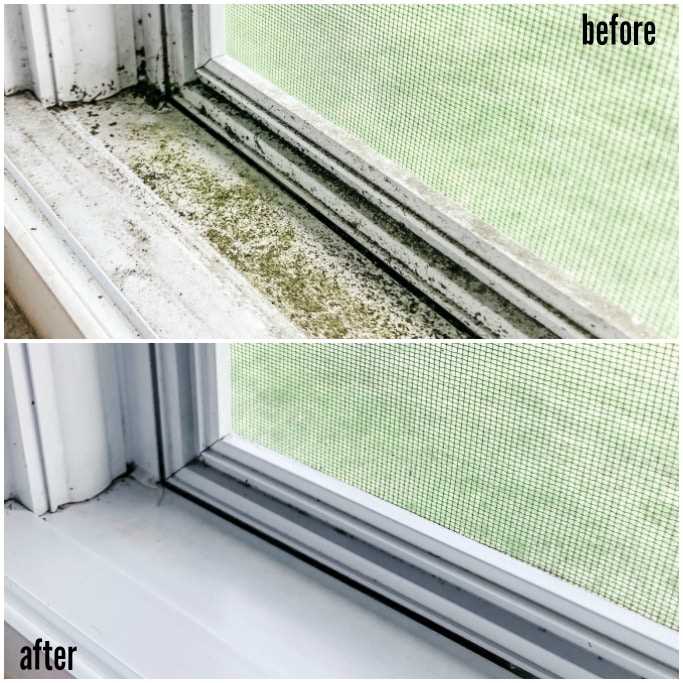
Window sills, although often overlooked, play an important role in maintaining the overall appearance and functionality of your windows. Regular maintenance of window sills can help prevent damage, improve energy efficiency, and enhance the aesthetic appeal of your home. Here are a few reasons why window sill maintenance is important:
Preventing Damage:
- Dirt, debris, and moisture can accumulate on window sills over time, which can lead to the growth of mold and mildew. This can weaken the structure of the window sill and cause it to rot or become damaged.
- Cracks or gaps in the window sill can allow water to seep into your home, potentially causing water damage or even structural issues. Regular maintenance and sealing of window sills can help prevent this.
- Regular cleaning and maintenance can also help prevent pests from nesting or entering your home through the window sills.
Improving Energy Efficiency:
Window sills that are properly sealed and free from dirt and debris can help improve the energy efficiency of your home. A well-maintained window sill can prevent drafts and reduce heat loss or gain, which can result in lower energy bills.
Enhancing Aesthetic Appeal:
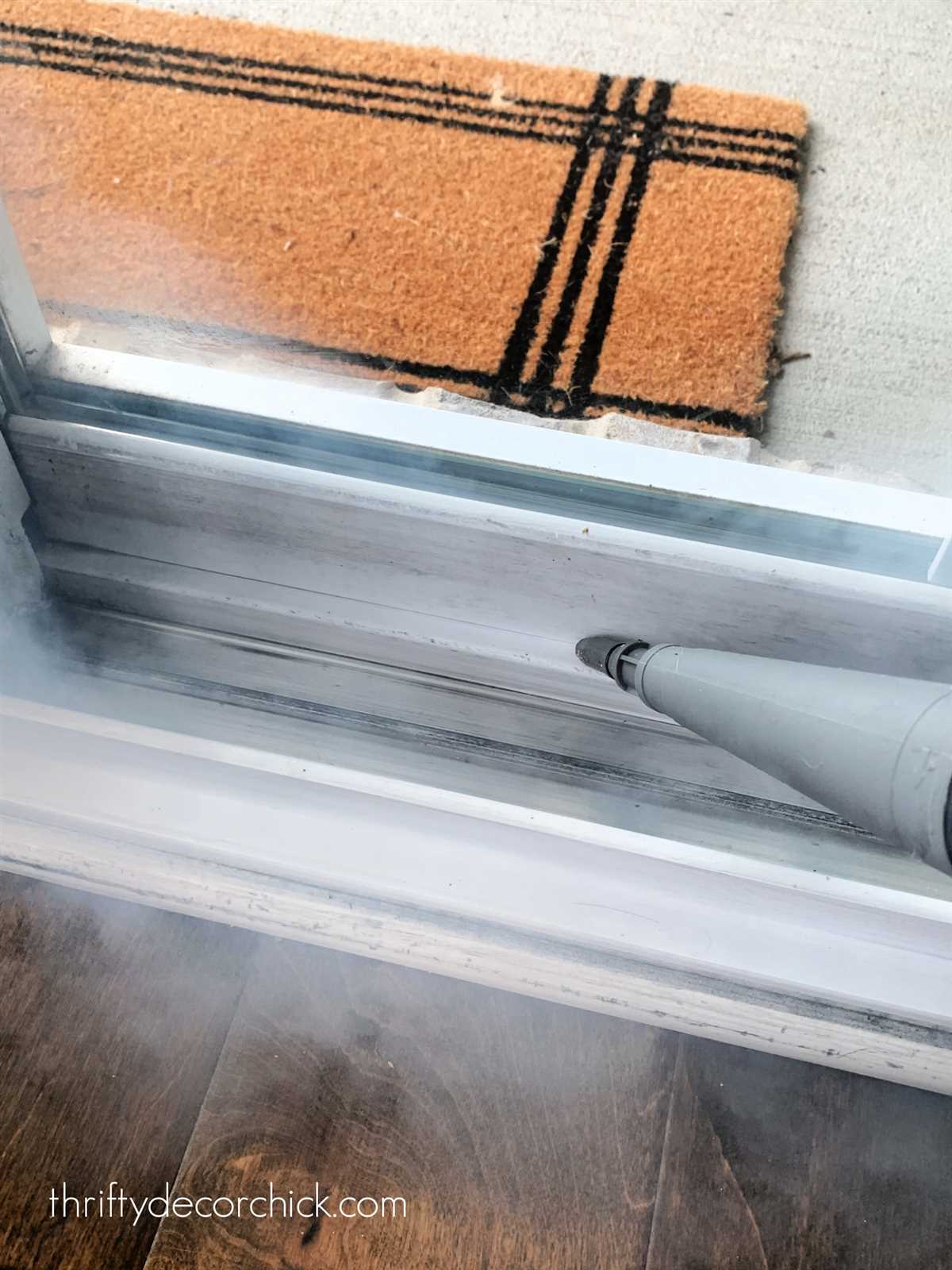
Window sills are often visible from both the inside and outside of your home, and a dirty or damaged window sill can detract from the overall appearance of your windows. Regular cleaning and maintenance can help keep your window sills looking clean and well-maintained, enhancing the overall aesthetic appeal of your home.
Tips for Window Sill Maintenance:
- Regularly clean your window sills using a mild cleaning solution and a soft cloth or sponge.
- Check for any cracks or gaps in the window sill and seal them with a suitable caulk or sealant.
- Remove any debris or leaves that may have accumulated on the window sills.
- Inspect your window sills for any signs of rot or damage and repair or replace them as necessary.
- Consider applying a protective coating or paint to your window sills to prevent damage from UV rays and weathering.
By taking the time to maintain your window sills, you can ensure that they remain functional, visually appealing, and contribute to the overall longevity of your windows and home.
Essential Tools for Cleaning Window Sills
When it comes to cleaning window sills, having the right tools can make the task much easier and more effective. Here are some essential tools you’ll need:
- Dustpan and brush: A dustpan and brush are essential for sweeping away loose dirt and debris from the window sills.
- Microfiber cloth: A microfiber cloth is great for wiping down the window sills and removing dust and grime.
- All-purpose cleaner: An all-purpose cleaner is essential for tackling stubborn stains and dirt on the window sills.
- Toothbrush: A toothbrush is a handy tool for reaching into tight corners and crevices on the window sills.
- Cotton swabs: Cotton swabs can be used to clean small and delicate areas on the window sills.
- Extendable duster: An extendable duster can help you reach high or hard-to-reach window sills without straining yourself.
- Vacuum cleaner with brush attachment: A vacuum cleaner with a brush attachment is great for quickly removing loose dirt and dust from the window sills.
Having these essential tools on hand will make cleaning your window sills a breeze. Remember to always follow the manufacturer’s instructions and guidelines for using these tools and any cleaning products you choose.
Must-Have Supplies for Effective Cleaning
Cleaning your window sills requires the right supplies to ensure the job is done effectively. Here are the must-have supplies you’ll need:
- Microfiber cloth: A microfiber cloth is essential for capturing dust and dirt without scratching the surface of your window sills. It is also absorbent and can be used for wiping away cleaning solutions.
- All-purpose cleaner: An all-purpose cleaner is great for removing general dirt and grime from your window sills. Look for a cleaner that is safe to use on the specific material your sills are made of.
- Vinegar: Vinegar is a powerful natural cleaner that can be used to remove stubborn stains and build-up on your window sills. Mix equal parts vinegar and water in a spray bottle for an effective cleaning solution.
- Toothbrush: A toothbrush is perfect for getting into those hard-to-reach corners and crevices on your window sills. Use it to scrub away dirt and grime.
- Cotton swabs: Cotton swabs are great for cleaning small and delicate areas on your window sills, such as the tracks and grooves.
- Bucket of warm water: A bucket of warm water is necessary for diluting cleaning solutions and rinsing your cloth or sponge.
- Squeegee: A squeegee is a handy tool for removing excess water and cleaning solution from your window sills. It helps to leave a streak-free finish.
Having these supplies on hand will make the cleaning process much easier and more effective. Remember to follow the manufacturer’s instructions when using any cleaning products and always test them on a small, inconspicuous area before applying them to the entire surface of your window sills.
Easy Methods to Clean Window Sills
Cleaning window sills can be a daunting task, but with the right methods, it can be done easily and effectively. Follow these easy methods to keep your window sills looking clean and fresh.
1. Gather Your Supplies
Before you start cleaning, gather all the necessary supplies. You will need:
- A vacuum cleaner with a brush attachment
- A soft brush or toothbrush
- A microfiber cloth or sponge
- All-purpose cleaner or vinegar solution
- Window cleaner
- Paper towels or lint-free cloth
2. Remove Debris with a Vacuum Cleaner
Start by using a vacuum cleaner with a brush attachment to remove any loose dirt, dust, or debris from the window sill. This will make the cleaning process easier and more effective.
3. Scrub with a Soft Brush or Toothbrush

Next, use a soft brush or toothbrush to scrub the window sill. Pay attention to the corners and edges where dirt tends to accumulate. Make sure to scrub gently to avoid damaging the surface of the window sill.
4. Wipe with a Microfiber Cloth or Sponge
After scrubbing, wipe the window sill with a damp microfiber cloth or sponge. This will remove any remaining dirt or grime and leave the surface clean.
5. Use an All-purpose Cleaner or Vinegar Solution
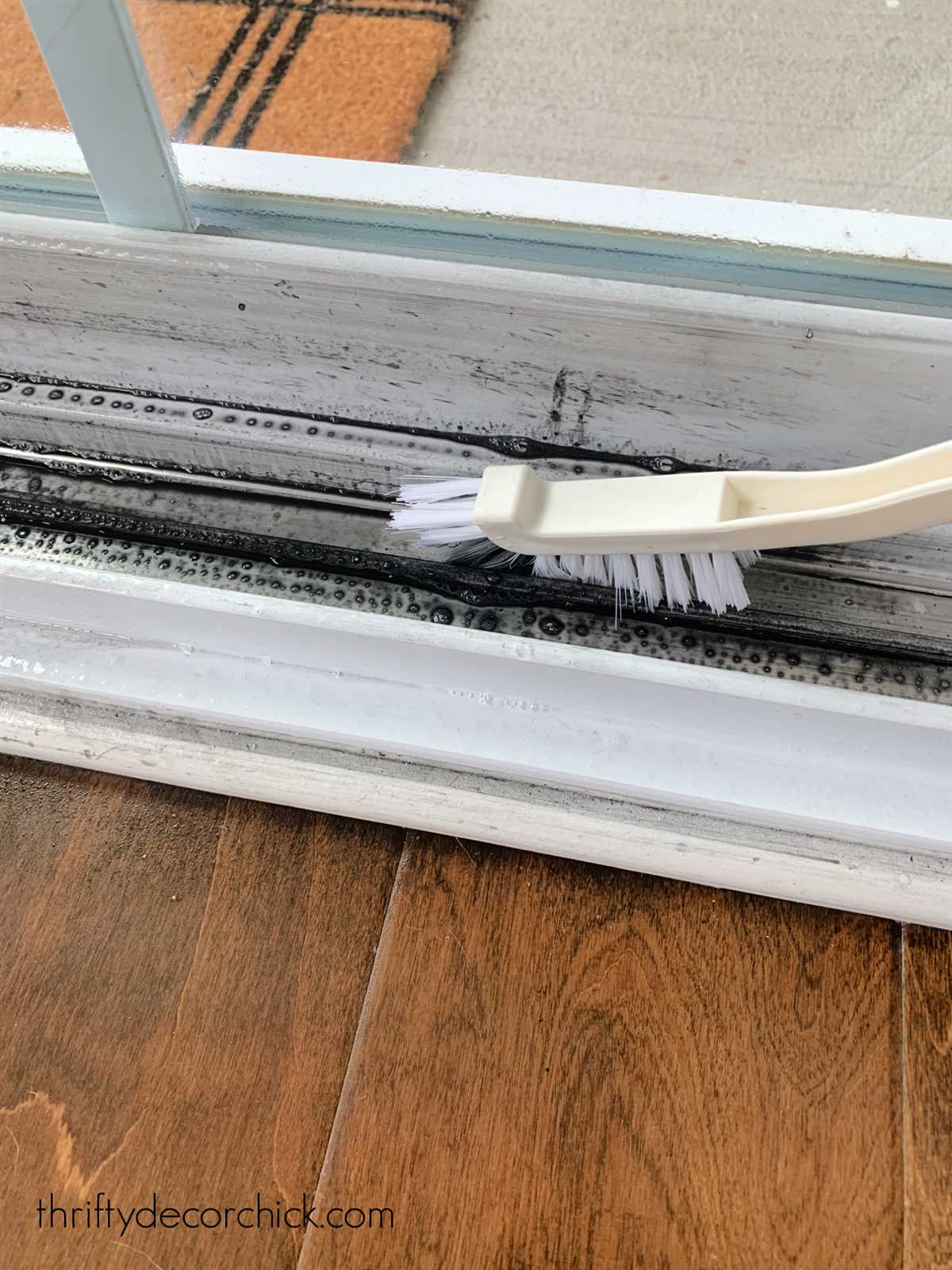
If there are stains or stubborn dirt on the window sill, you can use an all-purpose cleaner or vinegar solution. Apply the cleaner to a cloth or sponge and scrub the stained area gently. Rinse with water and wipe dry.
6. Clean the Window Glass
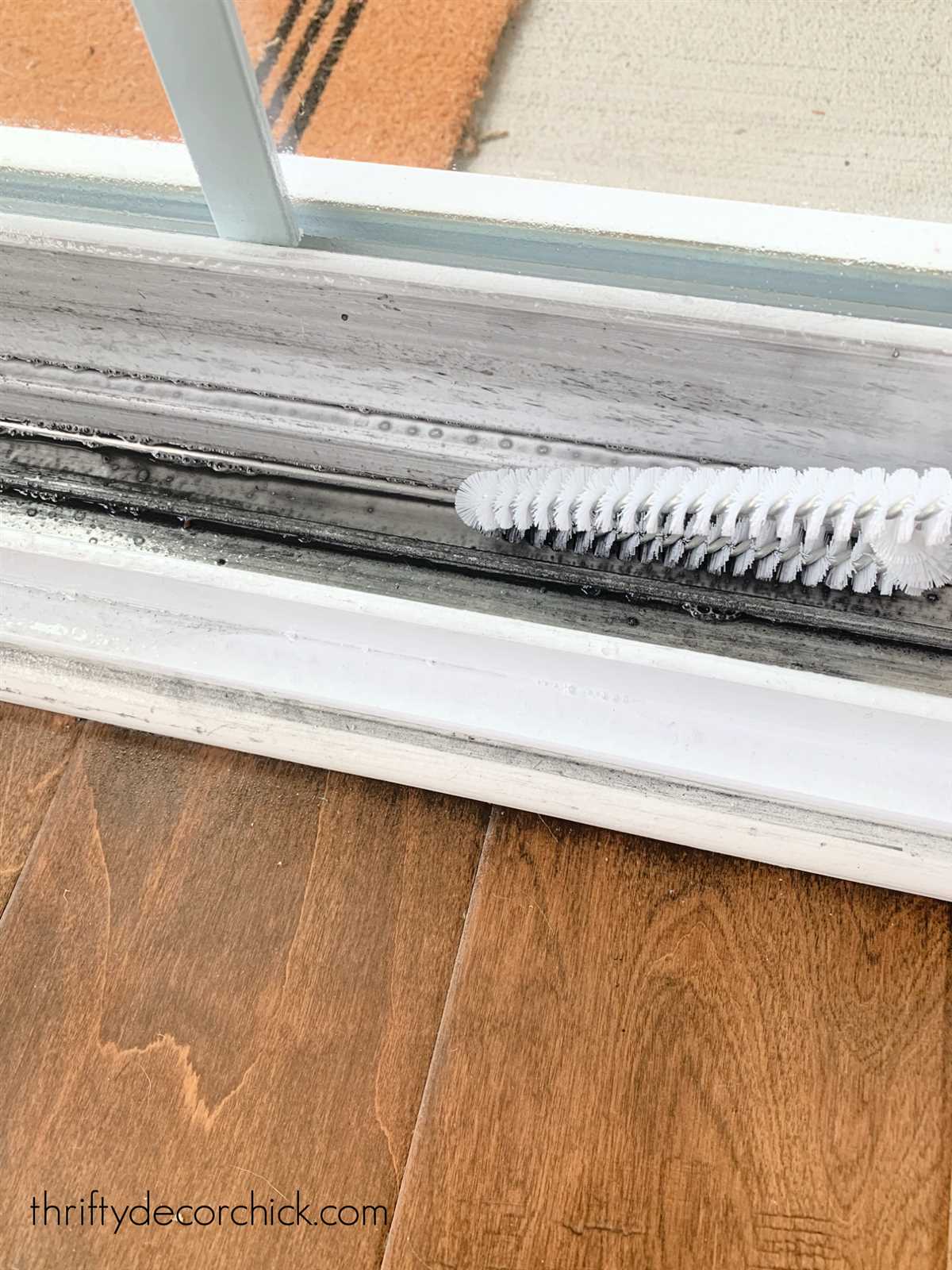
While you’re cleaning the window sills, it’s a good idea to clean the window glass as well. Spray the window cleaner directly onto the glass and wipe it clean with a paper towel or lint-free cloth.
7. Regular Maintenance
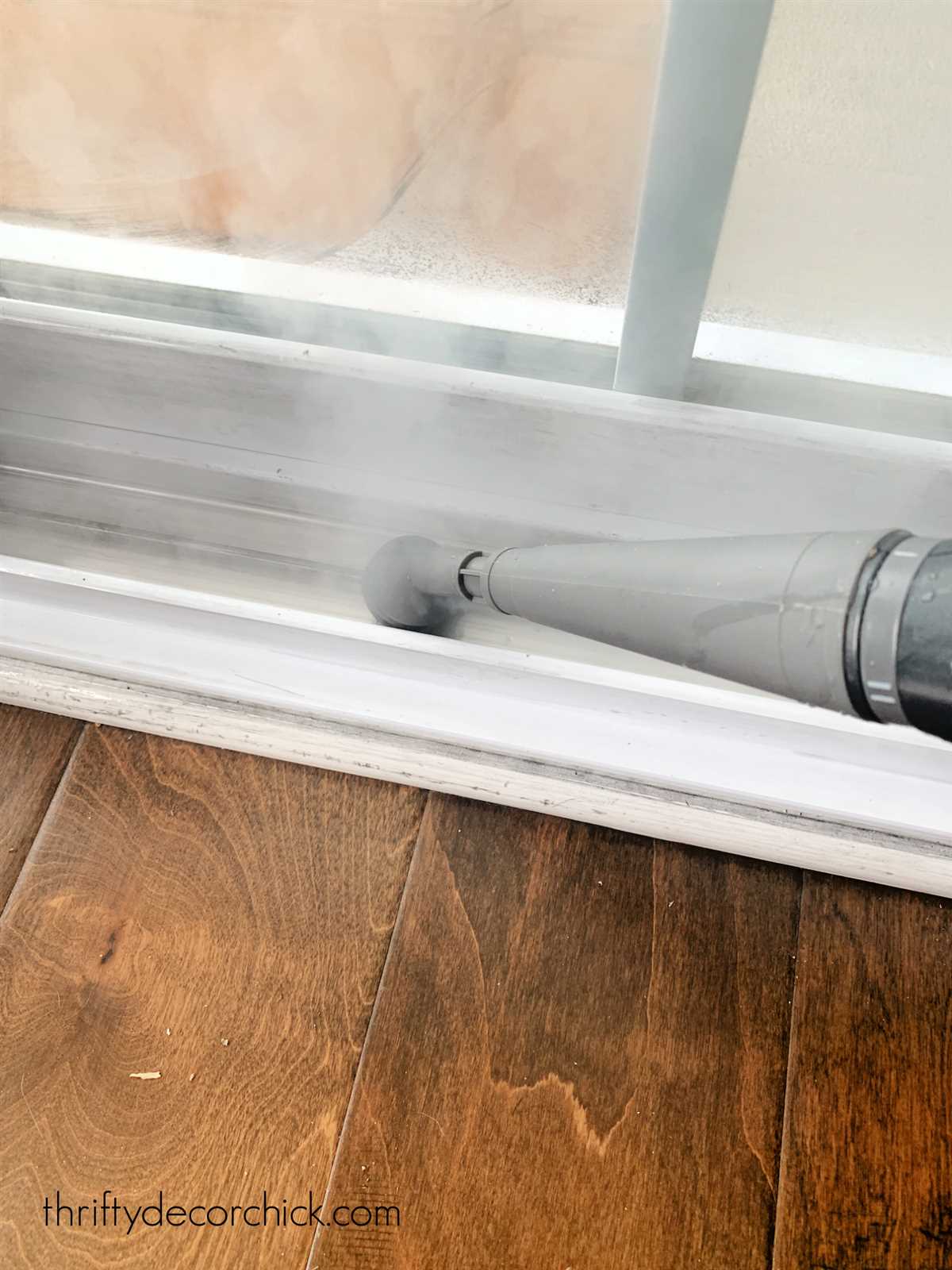
To keep your window sills clean for longer, make it a habit to regularly dust and wipe them down. This will prevent the accumulation of dirt and grime and make the cleaning process easier in the future.
8. Conclusion
Cleaning window sills doesn’t have to be a difficult task. By following these easy methods and maintaining regular cleaning habits, you can keep your window sills looking clean and fresh without much effort.
Effortless Techniques for Spotless Sills
1. Regular Maintenance
One of the easiest ways to keep your window sills spotless is through regular maintenance. Regularly dusting the sills with a soft cloth or vacuuming them with a brush attachment can help prevent dirt and debris from building up.
2. Vinegar and Water Solution
A vinegar and water solution is an effective and natural cleaner for window sills. Simply mix equal parts of white vinegar and water in a spray bottle and spritz it onto the sills. Let it sit for a few minutes, then wipe away the dirt and grime with a cloth or paper towel.
3. Baking Soda Paste

If there are stubborn stains or grease on your window sills, a baking soda paste can help remove them. Mix a small amount of baking soda with water to form a paste, then apply it to the stained areas. Let it sit for a few minutes, then scrub gently with a soft brush or cloth. Rinse with clean water and wipe dry with a towel.
4. Dish Soap and Warm Water
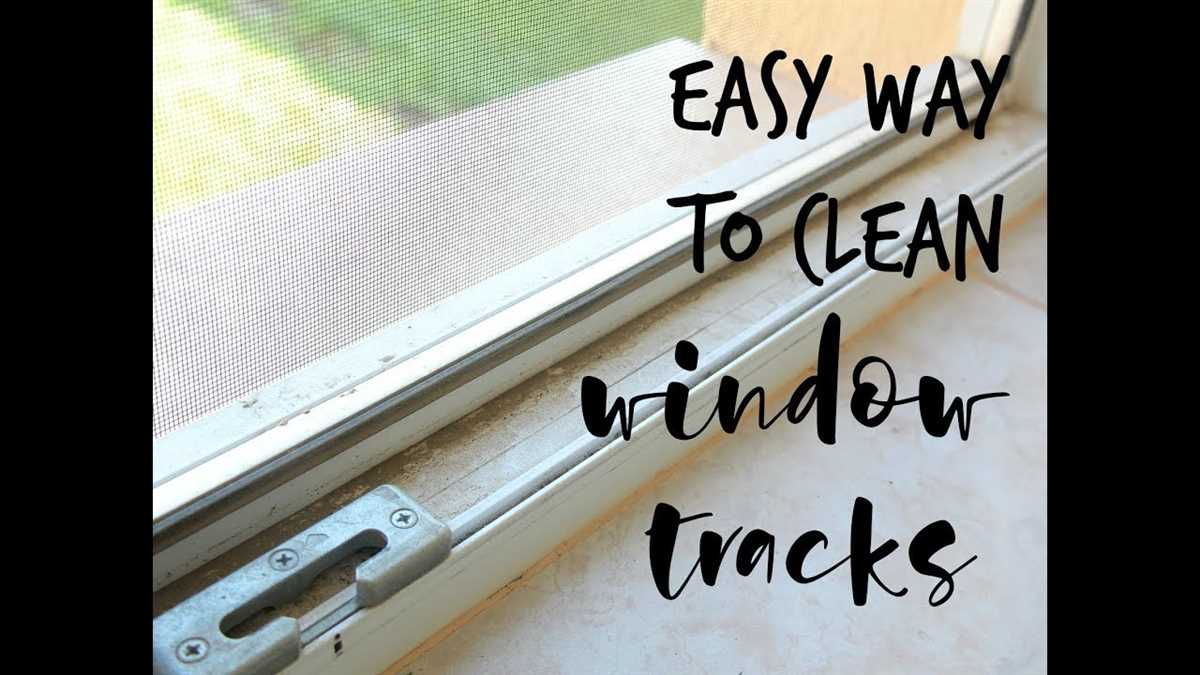
For regular cleaning, a simple mixture of dish soap and warm water can do wonders. Fill a bucket or sink with warm water and add a few drops of dish soap. Dip a cloth or sponge into the soapy water, wring out the excess, and gently scrub the window sills. Rinse with clean water and dry with a towel.
5. Commercial Window Cleaners
If you prefer to use commercial cleaners, there are numerous window cleaning products available in the market. Follow the instructions on the label and choose a cleaner that is suitable for the material of your window sills. Remember to ventilate the area and wear gloves when using harsh chemicals.
6. Maintenance Tips
- Keep window sills clear of objects and clutter to minimize dust accumulation.
- Avoid using abrasive cleaners or tools that could damage the surface of the sills.
- Regularly inspect the sills for any signs of damage or wear and address them promptly.
- Consider using window sill covers or sealants to protect them from moisture and dirt.
By implementing these effortless techniques, you can maintain spotless window sills and enhance the overall appearance of your windows.
Homemade Natural Cleaners for Window Sills
Cleaning window sills is an important part of maintaining a clean and healthy home. Using homemade natural cleaners can be an effective and eco-friendly way to keep your window sills looking their best. Here are some easy and affordable homemade natural cleaners you can make at home:
Vinegar and Water Solution
One of the simplest and most effective homemade cleaners for window sills is a mixture of vinegar and water. Vinegar is a natural cleaning agent that can help remove dirt, grime, and stains from your window sills. To make this solution, mix equal parts vinegar and water in a spray bottle. Spray the solution onto the window sills and wipe clean with a soft cloth or paper towel.
Baking Soda Paste
Baking soda is another natural cleaner that can be used to remove stubborn stains from window sills. To make a baking soda paste, mix baking soda with a small amount of water until it forms a thick paste. Apply the paste to the stained areas of the window sills and let it sit for a few minutes. Then, scrub the paste with a soft brush or sponge and rinse with water.
Lemon Juice and Olive Oil Mixture
If you’re looking for a natural cleaner that leaves a pleasant scent, try a mixture of lemon juice and olive oil. Lemon juice is a natural disinfectant and can help remove dirt and grime, while olive oil can help restore shine to your window sills. Mix equal parts lemon juice and olive oil in a spray bottle and shake well. Spray the mixture onto the window sills and wipe clean with a soft cloth.
Salt and Vinegar Scrub
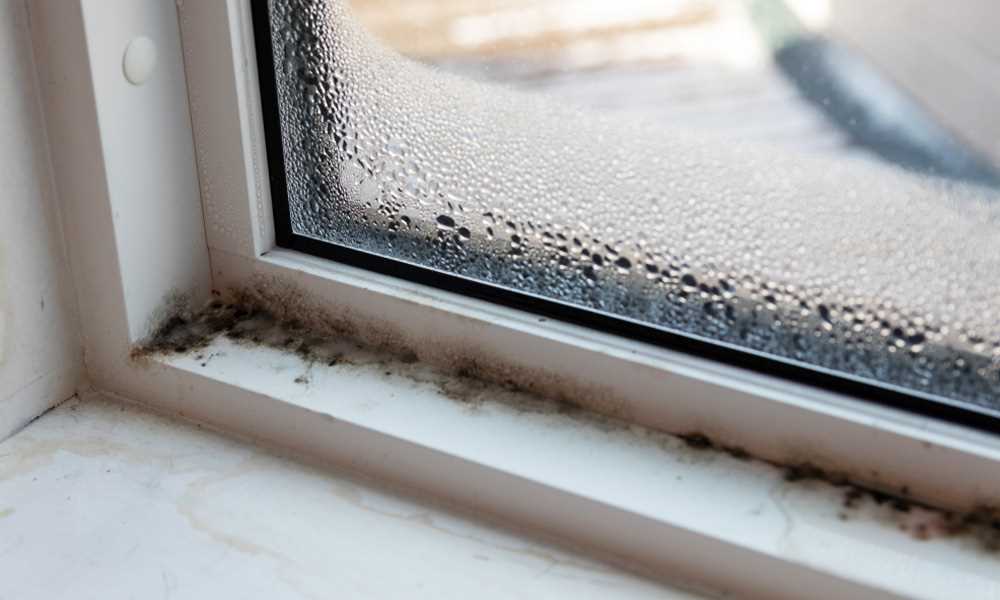
If you have stubborn stains or dried-on dirt on your window sills, a salt and vinegar scrub can help remove them. Mix equal parts salt and vinegar to create a thick paste. Apply the paste to the stained areas and scrub gently with a sponge or brush. Rinse with water and wipe clean with a cloth.
Essential Oil Spray
To add a fresh scent to your window sills, you can create an essential oil spray. Fill a spray bottle with water and add a few drops of your favorite essential oil, such as lavender or citrus. Shake well and spray the mixture onto the window sills. Wipe clean with a soft cloth or paper towel.
Conclusion
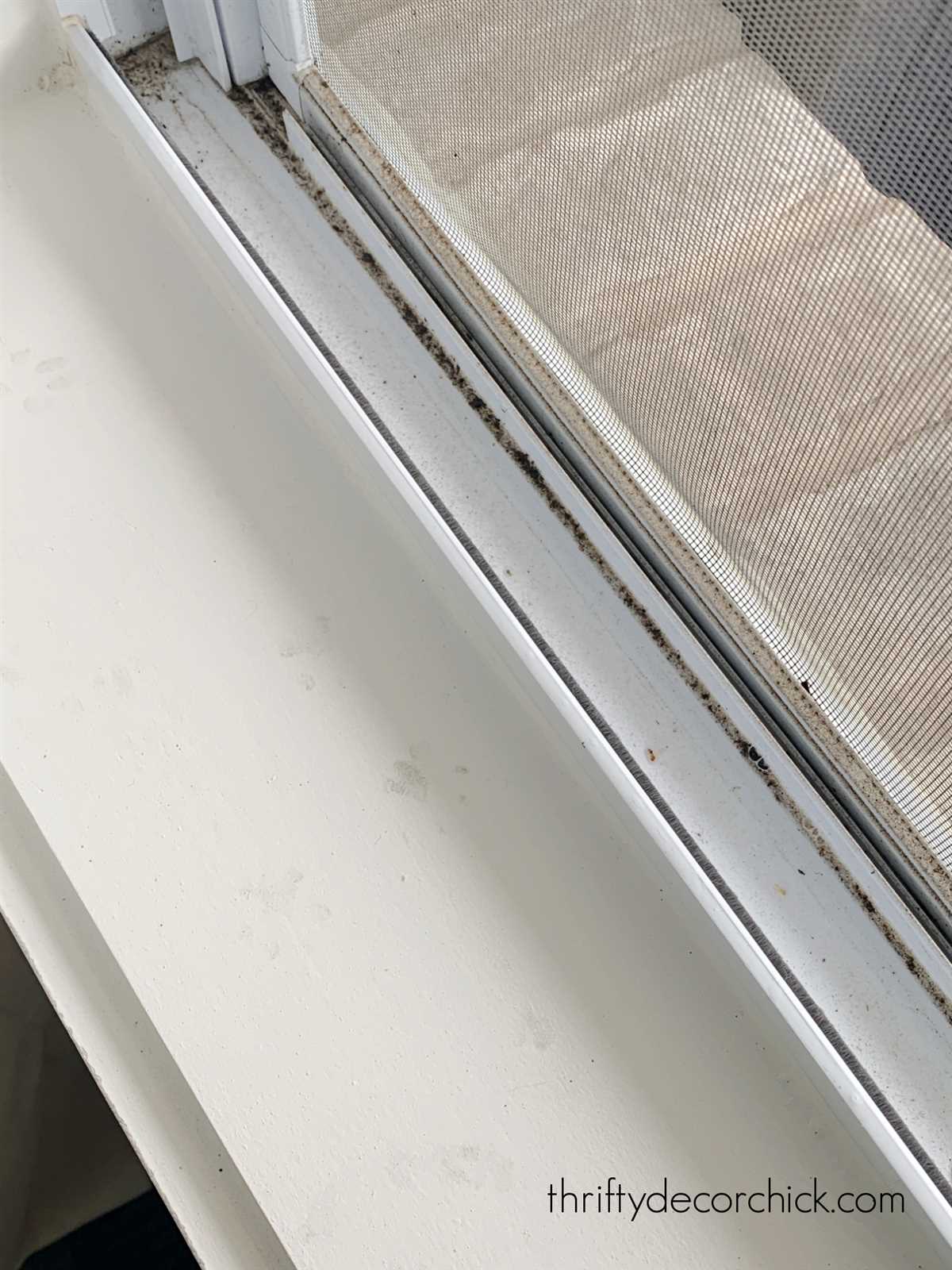
Cleaning your window sills doesn’t have to involve harsh chemicals or expensive products. With these homemade natural cleaners, you can keep your window sills clean and fresh while also protecting the environment. Remember to always test any homemade cleaner on a small, inconspicuous area before using it on the entire surface of your window sills.
FAQ
What are some easy and effective methods to clean window sills?
There are several easy and effective methods to clean window sills. One method is to use a mixture of warm water and dish soap, scrubbing the sills with a sponge or scrub brush. Another method is to use vinegar and water, spraying the mixture onto the sills and wiping them down with a cloth. Additionally, using a vacuum cleaner with a brush attachment can help remove any loose dirt or debris.
Can I use bleach to clean window sills?
Yes, you can use bleach to clean window sills. However, it is important to dilute the bleach with water before applying it to the sills. It is recommended to use a mixture of one part bleach to ten parts water. Be sure to wear gloves and ventilate the area well when working with bleach.
What can I do to prevent mold and mildew on my window sills?
To prevent mold and mildew on window sills, it is important to keep them clean and dry. Regularly wiping down the sills with a mixture of vinegar and water can help prevent the growth of mold and mildew. Additionally, ensuring good ventilation in the room can help reduce humidity and prevent mold and mildew from forming.
How often should I clean my window sills?
The frequency of cleaning window sills depends on various factors such as the location of the windows, the amount of dust and dirt in the area, and personal preference. However, it is generally recommended to clean window sills at least once every few months. If you notice a build-up of dirt, debris, or mold, it is best to clean them sooner rather than later.
Can I use a pressure washer to clean my window sills?
Using a pressure washer to clean window sills is not recommended as it can damage the sills or even break the windows. The high pressure from the washer can cause cracks, leaks, or other damage. It is best to use milder methods such as warm water and soap or vinegar and water to clean window sills.
What should I do if my window sills are painted?
If your window sills are painted, it is important to take extra care when cleaning them. Avoid using harsh chemicals or abrasive materials that can strip the paint or cause damage. Instead, opt for mild cleaning solutions such as warm water and dish soap or vinegar and water. Gently scrub the sills with a soft sponge or cloth to avoid scratching or chipping the paint.










